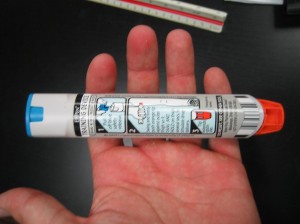Wasp stings are considered common especially during the warm months. Wasp stings can cause discomfort but majority of individuals can recover quickly without suffering from any complications. In some cases, individuals who are stung by a wasp tend to develop widespread symptoms known as large local reactions. In rare cases, others develop severe allergic reactions that are life-threatening.
Always remember that wasps have stingers that are used to defend themselves. This stinger contains poisonous venom that is transmitted during a sting. Wasps are capable of stinging several times since their stingers stay intact. Nevertheless, even if they do not leave the stinger, the wasp venom can cause irritation and pain.
Symptoms of a wasp sting
Many individuals who do not have allergies to stings will only suffer from minor symptoms during and after a wasp sting. The initial symptoms include sharp or burning pain at the site of the sting. Minor swelling, redness and itching can also occur.
In some cases, individuals can also develop an elevated welt around the sting site. There is a tiny white mark that is visible in the center of the welt in which the stinger punctured the skin. In most cases, the swelling and pain starts to minimize in just a few hours after the sting.
The large local reactions are the stronger symptoms linked with the wasp sting and include symptoms such as extreme redness and swelling that expands for 1-2 days. Individuals with the large local reactions can be allergic to the wasp stings, but will not experience the life-threatening symptoms.
Anaphylaxis after a wasp sting
Severe allergic reactions to wasp stings are known as anaphylaxis. This occurs once the body goes into shock as a response to the venom. Many individuals who go into shock after a wasp sting quickly. Emergency care is should be delivered right away. The symptoms of a severe allergic reaction to a wasp sting include:
- Severe swelling on the lips, face and throat
- Itching or hives in areas not affected by the sting
- Difficulty breathing
- Dizziness
- Abrupt drop in blood pressure
- Lightheadedness
- Diarrhea
- Nausea or vomiting
- Stomach cramps
- Racing or irregular pulse
Individuals who have a history of anaphylaxis always carry a kit that contains epinephrine injections or an Epi-Pen. This will help relax the blood vessels and muscles while normalizing the respiration and heart rate.
How to treat wasp stings
Wasp stings that are mild to moderate can be treated at home. The initial step is to wash the sting area using soap and water to remove the venom. A cold pack should be applied to the site of the sting to minimize pain and swelling. Always keep the wound clean and dry to prevent infection and cover it with a bandage.

Hydrocortisone cream or calamine lotion can be used to minimize the discomfort. Colloidal oatmeal or baking soda can help soothe the skin. Pain medications can be used to relieve the pain while antihistamine is used to reduce the itchiness.
As for severe allergic reactions to wasp stings, immediate medical care is required. If an Epi-Pen is available, it should be administered as soon as the symptoms manifest. If the individual has a history of wasp allergies, Epi-Pen should be administered as soon as the person was stung and then call for emergency assistance.
